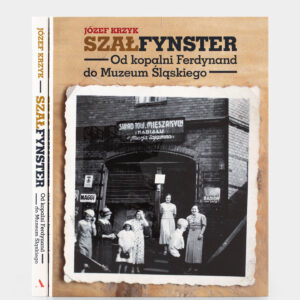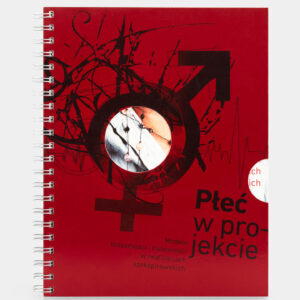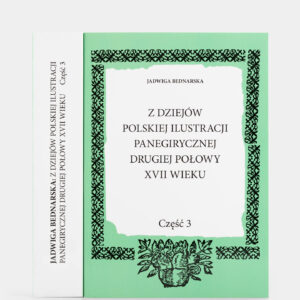Kopice. A Story of Beauty Lost
185.00 zł z VAT
The album ‘Kopice. A Story of Beauty Lost’ is the most comprehensively developed monograph on the history of the unique palace and park complex in Kopice, one of the most renowned representatives of Neo-Gothic architecture in Silesia.
Opis
Text: Janusz L. Dobesz, Irma Kozina, Maciej Mischok.
The album ‘Kopice. A Story of Beauty Lost’ is the most comprehensively developed monograph on the history of the unique palace and park complex in Kopice, one of the most renowned representatives of Neo-Gothic architecture in Silesia.
Texts prepared by specialists, who discuss in detail both the architecture and history of the place and its owners, enriching the story with cultural elements and details related to art, as well as hundreds of photographs, both contemporary and archival ones, and above all a discussion of the current initiatives related to the restoration of the mausoleum and the palace itself, make the publication absolutely unique.
Particular emphasis is given to the expansion of the palace, whose main designer was Karl Lüdecke, starting in the second half of the 19th century, when the Counts Joanna and Hans Ulrich Schaffgotsch became the owners of Kopice. Their presence is associated with the best and most prosperous period in the history of the palace. Thanks to Lüdecke’s creative work, the palace in Kopice became an architectural landmark of the area, and was recommended by the press as particularly worthy of visiting as early as at the end of the 1860s.
The time of Kopice’s glory passed with the end of World War II, when the Schaffgotschs left the palace in fear of the approaching Soviet Army. Then came the slow degradation of the building and the area around it. Numerous devastations and thefts, culminating with an arson in the autumn of 1956, led to a sad finale: the palace, which was listed in the register of historical monuments, became a complete ruin.
In 2017, a group of regional history enthusiasts and social activists initiated a campaign to save the Schaffgotsch family mausoleum in Kopice. On the 28th of October, 2019, the exhumation of the Schaffgotschs and their reburial in the tomb took place. The renovation of the chapel was completed in the spring of 2022.
To purchase the album with shipping outside of Poland, please contact us by email: wydawnictwo@muzeumslaskie.pl.
The purchase of the book can only be made in PLN. The Silesian Museum does not have a currency account. Currency conversion costs are paid by the Buyer. Please check with your bank how much you need to pay so that the full price of the album and shipping costs are credited to the Silesian Museum’s account.
The current PLN exchange rate is available on the website of the National Bank of Poland: https://www.nbp.pl/
Shipping costs depend on the country of destination and the weight of the parcel. Shipping is carried out by the Polish Post Office. Available forms of delivery:
– economy package
– priority package
The up-to-date price list is available on the website of the Polish Post Office: https://cennik.poczta-polska.pl/
The weight of the package and the shipping costs will be provided to you by a Museum employee as part of a reply to your email. The link to the website is provided for information, to give you an idea of the carrier’s prices.
Informacje dodatkowe
| ISBN | 978-83-65945-38-9 |
|---|---|
| Details | Format 210 × 270 mm, 340 pages, hardcover, silver bookmark, uncoated paper, both black and white and colour illustrations, text in English, published in 2024 |
| Introduction | Community custodian of historic sites in Kopice Silesia is more than just industrial landscapes: it can also boast picturesque villages with beautiful churches and magnificent aristocratic residences. Some of its noble and merchant families owed the rise of their landed estates, such as Moschen (now: Moszna), Neudeck (Świerklaniec), Plawniowitz (Pławniowice), and Pless (Pszczyna), to their bold embracing of new technologies offered by the 19th century, i.e. the construction of foundries and coal mines, which improved the standard of living not only for their owners but also for the ordinary residents of the area (through the development of housing and road infrastructure). In the 19th century, Silesia was a promised land, where nature had granted access to its resources – its “treasures” – and thus contributed to the dawn of a new era in the region. My work includes an ample collection of iconographic mementoes of Kopice’s former resplendence, supported with previously unknown source materials. It tells the story of the ongoing extension of one of Silesia’s most interesting aristocratic residences, which received visitors from nearly all over the world. When viewing with admiration the Schaffgotsch family’s château and their popular 63‑hectare park with its 1,342 sculptures, some of those visitors described the mansion as something out of a fairytale, and were quite right in this observation, as it was home to Countess Johanna, who had been born the daughter of an ordinary peasant family. Through a conjunction of extraordinary events, at the age of six she inherited an estate comparable to the wealth of the Queen of England. At that time, such stories were possible only in Silesia, where anyone could become rich, which is what happened to Karl Godulla. This and more is the stuff of my book. Every story has its positive and negative facets; in Kopice, the negative ones begin after 1945, when the Polish communists arrive. Courtesy of their efficient management of the Schaffgotsch estate, the property was completely looted and in 1958 it burnt down, also due to the looters’ activities. Today we can enjoy the view of the beautiful majestic ruins of the château reflected in the park pond. Even the deceased owners of Schloss Koppitz were not spared: their bodies were profaned, which was standard conduct in the totalitarian era, as the communist policies left no room for kulaks and class enemies. Now, decades later, the unique Silesian line of the House of Schaffgotsch, which is related by blood to the Piasts, Poland’s oldest dynastic family, is regaining its splendour. Today, increasing numbers of people are taking an interest in the for‑ mer lords of Koppitz and the village itself. The joint efforts of Kopice’s parish priest, Father Jarosław Szeląg, and myself to save the Schaffgotsch family mauzoleum have contributed to restoring a calm, positive atmosphere in the area. Even descendants of the Schaffgotsches have begun to visit, and no one fears the unknown and the alien anymore. At this point I would like to thank Count Hans Ulrich von Schaffgotsch for his and his family’s cooperation and their assistance in gathering material for this book. Kopice continues to grow more and more beautiful, which can be observed near the mausoleum, but also around the mansion, whose majestic ruins attract tourists. The arrival of a new owner allows us to hope with optimism that the ruins of the Schaffgotsch residence will be secured and saved. What he has done at the mansion in Żyrowa to date is a credit to him and gives us hope that similar results can be expected at Kopice in a decade or so. I feel privileged that I can tell my story of Kopice, a place that I have been attached to emotionally and involved with as an activist for over thirty years. Maciej Mischok |
| Contents | 13 Introduction, Maciej Mischok |










